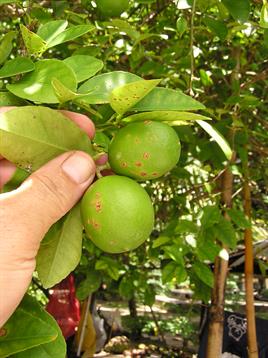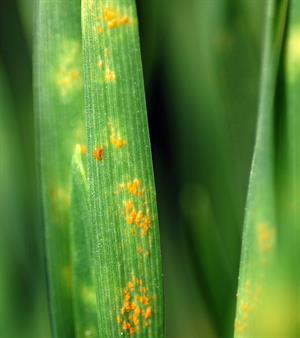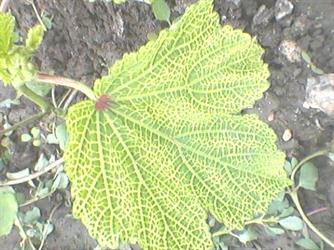
PUMPA - SMART LEARNING
எங்கள் ஆசிரியர்களுடன் 1-ஆன்-1 ஆலோசனை நேரத்தைப் பெறுங்கள். டாப்பர் ஆவதற்கு நாங்கள் பயிற்சி அளிப்போம்
Book Free DemoDiseases caused by microorganism in plants:
1. Citrus Canker
Disease-causing organism: Xanthomonas axonopodis (Bacterium)
Canker is mostly caused in citrus plants such as lemon, oranges, and also known as citrus canker.
Canker is mostly caused in citrus plants such as lemon, oranges, and also known as citrus canker.
An image of canker disease in lemon caused by a virus shown below.

Canker disease in lemon
Mode of transmission:
- Pathogen entry through plants stomata or wounds on leaves or other green parts.
- Rain, wind, and polluted equipment can all spread the infection.
Symptoms:
- Premature fall of leaves
- Blister-like lesions on leaves, stems and fruits
- A premature drop of fruits
Treatment:
- Infected plants or plant parts are burned to stop the disease from spreading.
- The only way to contain the outbreak is to use disease-free stocks.
- Infected canker leaves and fruits that have fallen to the ground are gathered and burned.
- Spraying plants with a \(1%\) Bordeaux mixture are found to be effective.
2. Rust of wheat
Disease-causing organism: Puccinia triticina
It causes leaf rust, also known as brown rust. This rust disease can be found in wheat, barley, and other cereal crops.

Leaf rust disease in wheat
Mode of transmission: Wheat leaf rust spreads through airborne infectious spores.
Symptoms:
- On the leaf surface, can see dusty, reddish-orange to reddish-brown fruiting bodies.
- Small bump like (pustules) structures can see on leaf blades and stems.
- Patches formed in extreme cases.
How to control:
- Remove and kill all contaminated pieces, then replant the field with resistant varieties.
- Applying fungicides early on will help prevent the disease from spreading.
- Splashing water on the leaves will aid in the spread of rust.
3. Yellow vein mosaic of bhindi or Okra yellow vein mosaic
Disease-causing organism: Monopartite Begomovirus
It is also called Bhindi yellow vein mosaic virus that affects okra plants.

Yellow vein mosaic of bhindi (Okra)
Mode of transmission: White flies are the carriers of the virus.
Symptoms:
Symptoms:
- The characteristic symptom is a yellowing of the entire network of veins in the leaf blade.
- In severe infections, the plant's younger leaves turn yellow, shrink in size, and become severely stunted.
- The virus clears the veins of the leaves, and the intervening region becomes entirely yellow or white.
- The majority of plants in a field may be diseased, and the infection may begin at any stage of plant growth.
- Infection prevents flowers from blooming, and any fruits that do form are likely to be smaller and harder.
- Fruits produced by the affected plants are yellow or white and unfit for marketing.
Management measures:
- Controlling the vectors that transmit Begamo or yellow vein mosaic virusis essential.
- Disease-affected plants are removed and destroyed from crop fields to prevent secondary disease transmission.
Reference:
https://www.flickr.com/photos/scotnelson/8232130507/in/photostream/
https://upload.wikimedia.org/wikipedia/commons/2/23/CSIRO_ScienceImage_10772_Rustaffected_wheat_seedlings.jpg--
https://upload.wikimedia.org/wikipedia/commons/6/64/Bhendi_vein_clearingPhoto-0028.jpg